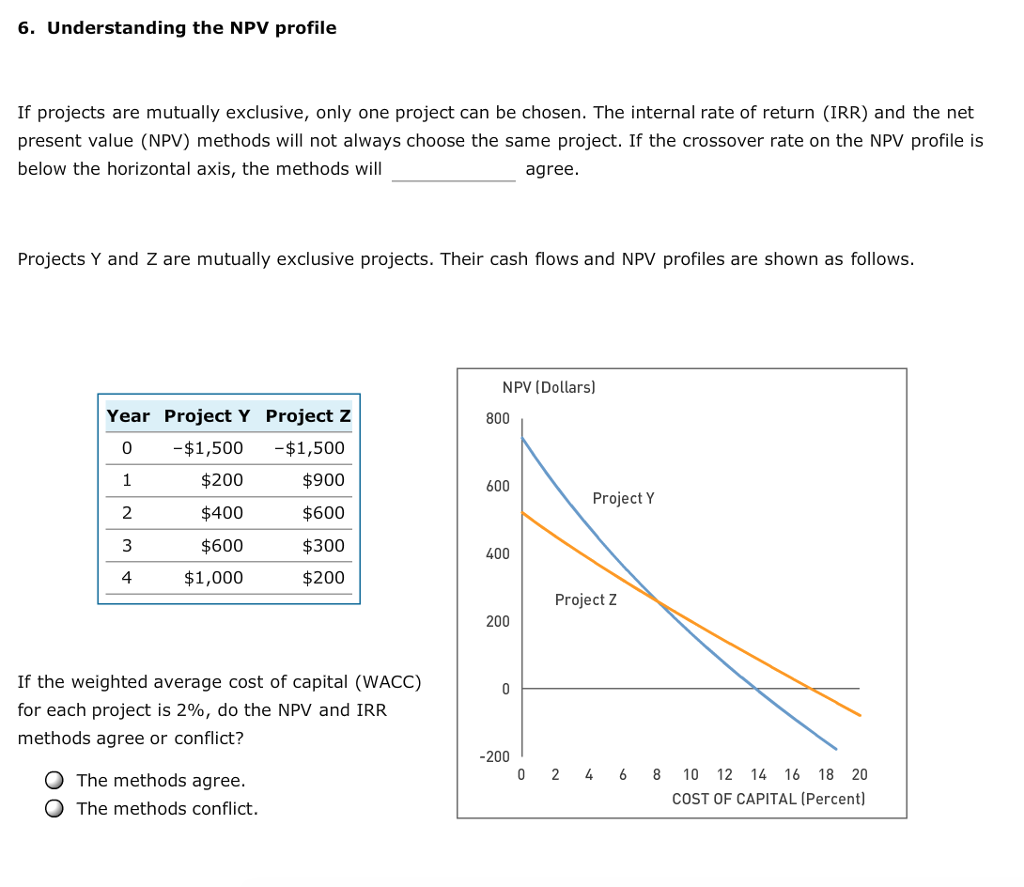17 Dic 16 2 Net Present Value NPV Method Principles of Finance

Net Present Value is a critical tool in financial decision-making, as it enables investors and financial managers to evaluate the profitability and viability of potential investments or projects. Investors use NPV to evaluate potential investment opportunities, such as stocks, bonds, or real estate, to determine which investments are likely to generate the highest returns. The payback method calculates how long it will take to recoup an investment.

How confident are you in your long term financial plan?
Moreover, the payback period calculation does not concern itself with what happens once the investment costs are nominally recouped. If the present value of these cash flows had been negative because the discount rate was larger or the net cash flows were smaller, then the investment would not have made sense. Assume the monthly cash flows are earned at the end of the month, with the first payment arriving exactly one month after the equipment has been purchased. This is a future payment, so it needs to be adjusted for the time value of money.
Net Present Value (NPV): What It Means and Steps to Calculate It
Thus, you can see that the usefulness of the IRR measurement lies in its ability to represent any investment opportunity’s possible return and compare it with other alternative investments. The articles and research support materials available on this site are educational and are not intended to be investment or tax advice. All such information is provided solely for convenience purposes only and all users thereof should be guided accordingly. Notwithstanding these additional items, a company might chart competing projects on the same chart to help decide which ones are likely to produce the biggest profits.
What is the approximate value of your cash savings and other investments?
- It is the discount rate at which the NPV of an investment or project equals zero.
- Assume the monthly cash flows are earned at the end of the month, with the first payment arriving exactly one month after the equipment has been purchased.
- The net present value rule is the idea that company managers and investors should only invest in projects or engage in transactions that have a positive net present value (NPV).
- The NPV profile is a graphical representation of the net present value (NPV) of an investment project at different discount rates.
- All of our content is based on objective analysis, and the opinions are our own.
A positive NPV suggests that an investment will be profitable while a negative NPV suggests it will incur a loss. The NPV profile provides a panoramic view of an investment’s financial viability. By plotting npv against the discount rate (or cost of capital), we witness the ebb and flow of project profitability. Peaks signify optimal discount rates where NPV is maximized, while valleys reveal the cost of capital at which the project turns unprofitable. This holistic assessment allows decision-makers to strike a delicate balance between risk and reward. Higher discount rates indicate the cash flows occurring sooner, which are influential to NPV.
Remember, sensitivity analysis isn’t about predicting the future with certainty; it’s about understanding the range of possibilities and making informed decisions. By incorporating sensitivity analysis into our investment appraisal process, we enhance our ability to navigate uncertainty and optimize resource allocation. Remember, NPV is a powerful tool, but it has limitations (such as assuming constant discount rates). Always interpret NPV results in conjunction with other metrics and qualitative factors. Where CF represents cash flows in each period, r is the discount rate, and n is the number of periods.
What Does a Negative NPV Indicate?
One drawback of this method is that it fails to account for the time value of money. For this reason, payback periods calculated for longer-term investments have a greater potential for inaccuracy. A notable limitation of NPV analysis is that it makes assumptions about future events that may not prove correct. The discount rate value used is a judgment call, while the cost of an investment and its projected returns are necessarily estimates. The full calculation of the present value is equal to the present value of all 60 future cash flows, minus the $1 million investment.
One limitation of NPV is that it relies on accurate cash flow projections, which can be difficult to predict. It also assumes that cash flows will be received at regular intervals, which may not always be the case. Additionally, NPV does not take into account non-financial factors such as risk, which can also impact investment decisions.
Given an investment opportunity, a firm needs to decide whether undertaking the investment will generate net economic profits or losses for the company. One of the primary advantages of NPV is its consideration of the time value of money, which ensures that cash flows are appropriately adjusted for their timing and value. The time value of money is a fundamental concept in finance, which suggests that a dollar received today is worth more than a dollar received in the future. Values below the x-axis represent negative NPVs — that is, money-losing investments.
An investor can perform this calculation easily with a spreadsheet or calculator. To illustrate the concept, the first five payments are displayed in the table below. It accounts for the fact that, as long as interest rates are positive, a dollar today is worth more than what is a three-way match in accounts payable gep glossary a dollar in the future. In the context of evaluating corporate securities, the net present value calculation is often called discounted cash flow (DCF) analysis. It’s the method used by Warren Buffett to compare the NPV of a company’s future DCFs with its current price.





